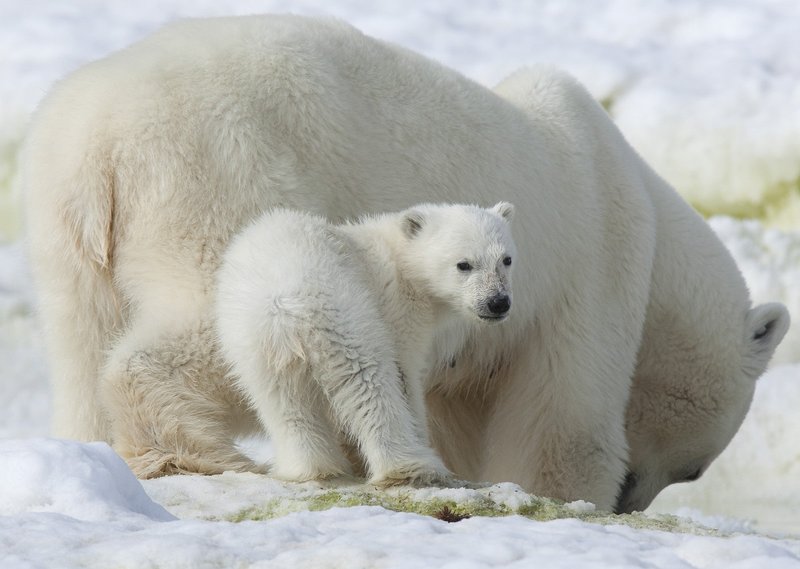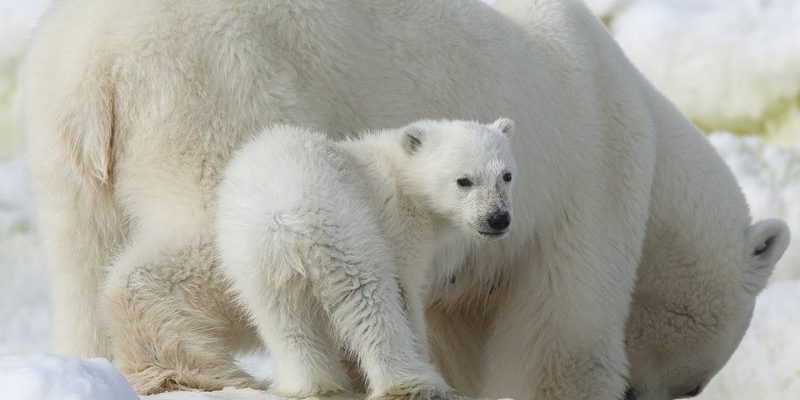
You might be wondering why it’s important to know these differences. Understanding these animals doesn’t just deepen our appreciation of nature; it also plays a part in conservation efforts. Each of these species has unique roles in their ecosystems, and by knowing them, we can become better stewards for wildlife protection. So, let’s explore ten animals similar to the polar bear, how they compare, and what sets them apart.
1. Grizzly Bear
The grizzly bear is perhaps one of the most recognizable cousins of the polar bear. Both belong to the same family, Ursidae, and share similar physical structures. Grizzlies have a more robust and muscular frame, often with a noticeable hump on their shoulders—something you won’t find on a polar bear. In addition, their fur varies in color from light brown to dark brown, but it doesn’t come close to the stark white coat of the polar bear.
In terms of habitat, grizzly bears prefer forested areas and mountainous regions rather than the icy expanses of Arctic tundra. Their diet is also quite different! Grizzlies are omnivores and can often be seen foraging for berries, insects, and fish, whereas polar bears primarily hunt seals and rely on sea ice for their hunting platforms.
2. Kodiak Bear
Similar to the grizzly bear, the Kodiak bear is another massive relative of the polar bear. Found on Kodiak Island in Alaska, these bears can reach sizes comparable to those of polar bears, with males averaging around 1,500 pounds! The Kodiak bear’s fur tends to be a rich brown, which can sometimes appear almost golden in sunlight.
You might think they share similar habitats, but Kodiak bears thrive in coastal forests and valleys, where they can catch salmon during spawning season. Unlike polar bears, which are heavily reliant on sea ice and ocean hunting, Kodiaks have a diverse diet, including both plants and animals.
3. Spirit Bear
The Spirit bear, known as the Kermode bear, is another fascinating relative of the polar bear, and you might find its appearance captivating. These bears are a subspecies of the American black bear and are known for their rare white or cream-colored coats, which can sometimes give off an ethereal glow—hence the “spirit” in their name.
While they don’t inhabit the Arctic regions like polar bears, spirit bears are found on the coast of British Columbia, Canada. They primarily eat salmon, berries, and plants, and they’re more adapted to forested areas than icy terrains. If you encounter one, you’ll notice their smaller size compared to polar bears, which can reach up to 1,500 pounds!
4. Asiatic Black Bear
If you’ve ever seen a bear climbing trees, you might have caught a glimpse of the Asiatic black bear. This bear, often found in the forests of Asia, has a shiny black coat with a distinctive white “V” shape on its chest. While it might not be as massive as the polar bear, it shares a similar build, including a rounded face and long claws.
Asiatic black bears are omnivorous, munching on everything from fruits and nuts to insects and small animals. Unlike polar bears, they prefer forested habitats and are quite adept at climbing trees, which helps them find food, evade predators, and stay cool during warm months.
5. Sun Bear
Meet the sun bear, the smallest bear species in the world. While these bears might not look like their Arctic cousins, they do share a few attributes, like a similar snout shape and their status as omnivores. Sun bears are often found in the tropical forests of Southeast Asia, where they enjoy a diet rich in fruits, honey, and insects.
What sets them apart is their short, sleek black fur and a distinctive orange or yellow patch on their chest that resembles a rising sun. These adorable bears weigh much less than polar bears and possess long claws for climbing trees — a skill that helps them forage for food high up in the branches.
6. Spectacled Bear
The spectacled bear, also known as the Andean bear, holds a unique position among bear species. Found in the Andean mountains of South America, they are named for the distinctive markings around their eyes that resemble spectacles. These bears are smaller than polar bears and have a more slender build with a coat that varies from black to brown.
Unlike polar bears, their diet mainly consists of fruits, vegetables, and insects, as they primarily dwell in forested areas rather than ice-covered landscapes. If you ever spot a spectacled bear, you’ll notice their shy nature—making them less visible than their Arctic relatives.
7. Giant Panda
While you might not directly associate the giant panda with polar bears, they share the same family, Ursidae. Pandas are known for their striking black and white fur, which is quite different from the polar bear’s shaggy white coat. Interestingly, pandas mainly feed on bamboo, which constitutes around 99% of their diet, unlike polar bears that are specialized carnivores.
Giant pandas have a much smaller size, weighing around 200-300 pounds at most, and they inhabit the mountainous regions of central China. If you ever see a panda lounging and munching on bamboo, it might remind you of a polar bear’s serene presence—just in a much fluffier and more colorful package!
8. American Black Bear
The American black bear is pretty versatile and found in diverse habitats across North America. While they can have varying colors—ranging from black to brown and even cinnamon—they don’t have the same size and bulk as polar bears. American black bears are generally much smaller, with adult males averaging around 300 pounds.
Their diet is quite broad, encompassing everything from berries and nuts to small mammals. Unlike polar bears, they hibernate during winter months. So, if you’re ever out in the woods, keep an eye out for these bears—but, remember, they’ll be on the forage rather than hunting seals on sea ice!
9. Red Panda
Although the red panda shares a name and some characteristics with the giant panda, it belongs to a different family entirely. Red pandas have a striking reddish-brown fur and are much smaller than both polar and giant pandas, weighing around 8-14 pounds. They primarily inhabit the mountainous bamboo forests of the Himalayas, using their sharp claws to climb trees.
The red panda’s diet consists mostly of bamboo, similar to its larger cousin, though it can also enjoy fruits and small animals. Unlike the polar bear’s marine lifestyle, red pandas are arboreal and spend most of their time in trees, which sets them apart in behavior, habitat, and size.
10. Walrus
Finally, let’s not forget the walrus—though it’s not a bear, it shares the icy habitat of the polar bear and can sometimes be mistaken for one at a distance. These massive marine mammals are known for their long tusks and whiskers and can weigh up to 2,000 pounds! Unlike polar bears, walruses are more social creatures, often seen lounging together on ice floes.
Walruses are primarily found in the Arctic and rely on the ice to rest and breed. Their diet mainly consists of mollusks found on the ocean floor. While their color may be a light brown or gray, and they don’t have the bear-like characteristics, they definitely inhabit the same chilly environments.
In summary, understanding these ten animals similar to polar bears opens up a fascinating view of the animal kingdom. Each of them is unique in its own right, demonstrating how diverse and adaptive wildlife can be. Whether it’s a bear or a marine mammal, knowing how to tell them apart helps us appreciate their roles in our ecosystem. So next time you’re out exploring nature, keep an eye out for these amazing creatures and celebrate their differences!

